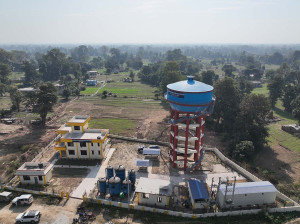Money
Grey market in mobiles thrives as device management system delayed
Insiders say tens of thousands of unlocked high-end mobile phones have been sold in the market, depriving the government of tax revenue.
Krishana Prasain
Grey marketeers in mobile phones are having a field day because of the delay by the Nepal Telecommunications Authority in implementing the mobile device management system, traders say.
The management system—which allows the telecom regulator to secure, monitor and manage end-user mobiles, thus eliminating imports from the grey market and phones sold without a bill and warranty—was supposed to be launched last December.
Insiders say tens of thousands of unlocked high-end mobile phones have been sold in the market, depriving the government of tax revenue.
“We suspect that the mobile grey market has increased. It may have expanded by 50 percent or is at the same level before the government made a soft launching of the mobile device management system at the start of the fiscal year,” Sanjay Agrawal, vice-president of the Mobile Phone Importers’ Association, told the Post.
"When the telecommunications authority made the soft launch, the grey market had shrunk to almost zero, prompting robust sales of mobile phones," Agrawal said.
"But when opportunist traders found out that the system was not going to be implemented, the grey market thrived. Individuals are bringing mobile sets in bulk through illegal channels,” he said.
The mobile device management system is expected to completely end the import of grey mobile sets contributing to the government’s revenue collection. Insiders say the government has been losing revenue because of the illegal import of phones.
The government charges 2.5 percent excise duty and an additional 13 percent VAT on each mobile phone imported into Nepal.
During a recent meeting with the association, officials of the Nepal Telecommunications Authority said the system would be switched on by February.
“The authority has been extending its implementation deadline time and again,” Agrawal said.
According to the Department of Customs, Nepal imported 3.56 million cell phones worth Rs25.62 billion in the first six months of the current fiscal year from mid-July 2021 to mid-January 2022.
During the same period in the last fiscal year, imports amounted to 3.66 million sets valued at Rs20.63 billion.
“We have been urging the finance and communication ministers to implement the system,” Agrawal said.
The Nepal Telecommunications Authority had originally planned to roll out the system in mid-July 2021, but it was put off due to the ever-lengthening lockdown as shipments of equipment required to set up a data centre were delayed, the authority said.
Since the budget statement for the fiscal year 2021-22 had declared that the system would be implemented, the authority made a soft launch on July 16, 2021.
“The government decided to implement the mobile device management system as a political decision without even consulting with the Nepal Telecommunications Authority. It was not the regulator’s decision,” Purushottam Khanal, chairman of the authority, told the Post.
The software is being imported from Malaysian firm Nuemera while hardware for the system is being imported from Huawei.
According to Khanal, the last consignment is yet to arrive from Huawei. “We are in continuous communication with the supplier. It has said that the equipment will be delivered as soon as possible,” Khanal said.
“It might take three months for the mobile device management system to come into full implementation,” Khanal said.
Last July, Khanal had told the Post that it might take a month and a half to get the system implemented in a full-fledged manner.
Khanal admitted that a delay had occurred due to the second wave of the Covid-19 pandemic that started in late April and virus restrictions continued for at least four months.
“We have completed all the internal preparations for the implementation of the system,” he said.
As per Khanal, software from Nuemera has already been installed at the Government Integrated Data Centre.
The system will be synced to a database called the Equipment Identity Register that contains records of legal and illegal mobile devices in the country. The device management system is also expected to identify cloned, low-cost copy versions of branded phones with fake registration numbers.
According to the Mobile Device Management System Bylaws 2018, individuals importing a device for personal use in accordance with customs regulation will be required to register online its International Mobile Equipment Identity (IMEI), Equipment Serial Number (ESN) and the Mobile Equipment Identifier (MEID) with the Mobile Device Management System during the application process.
The telecom regulatory authority moved to develop the system four years ago after the Mobile Device Management System Bylaws 2018 was issued.
The mobile connectivity of telecom operators like Nepal Telecom, Ncell and Smart Telecom will need to be connected to the system that will be operated from a new building at Chabahil.
The telecom regulator said the system was being built at a cost of Rs650 million.




 8.12°C Kathmandu
8.12°C Kathmandu













